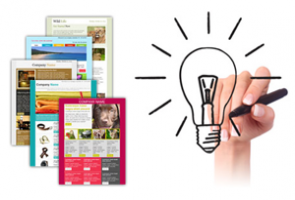They may seem like an old-fashioned idea, but the newsletter remains a staple for both information and marketing to this day. Add to that the power of the Internet and email, and you have at your disposal a powerful combination that can go miles toward expanding your marketing efforts.
Why Newsletters?
In a word, people read them. They open emails with the word “newsletter” in the subject at a rate of nearly 3 to 1 over other subjects – even really good ones – that are pure marketing. The reason for that is simple: People feel more relaxed when the feel like they aren’t being sold. If you hang around this blog (and other great marketing blogs) long enough, you’ll learn that sales copy doesn’t always hinge on using sales language. The power of the conversation is tremendous, especially in online marketing.
What to Write
Remember that the operative concept in a newsletter is news. That means that you have more license in a newsletter to talk about your company in this context than you do in raw marketing content. Marketing copy of any other kind needs to be heavily customer-focused. With a newsletter, it’s OK to talk about yourself, your company, your employees, and your accomplishments a little more.
Generating ideas boils down to focusing in on the big 6 of journalism: who, what, why, where, when, and how. Here are some ideas on how to approach each of these questions and develop a newsletter that converts.
#1 – Who?
That’s easy, isn’t it? The who is you: your company, the people in it, your brand identity. As I said above, it’s perfectly fine to prominently feature content that’s relevant to your company’s success in a newsletter and talk it up with pride. When people see what you’re accomplishing, it helps to establish trust. Show them that you and your company are going places and that you want them along for the ride.
#2 – What?
What’s going on in your company this week (or month, or quarter, depending on how often you publish)? What sorts of things can you report on that are going to get people to click through to learn more or make a purchase? Is it a new product line? A new promotion? A new service? A discount? If yours is a brick-and-mortar business, are you holding or sponsoring an event in the next few weeks? All of these have a place in your newsletter.
#3 – Why?
This is where you can start to turn the tables on readers. Report what’s happening, give them direct instructions on how to respond via a clear call to action, then answer the all-important question: why? Why should they respond in the way you’re asking them to? What do they get in exchange for whatever action you’re asking them to take? There must be an incentive.
#4 – Where?
Where can people get more information on your current promotions? Where is your next event happening? Better yet, where can people find the best prices, best-trained staff, best-stocked store, most professional and knowledgeable associates, etc.? This question should have the same answer throughout your newsletter: It’s with you, whether you’re directing them to your website, a landing page, or your physical place of business.
#5 – When?
Never report on things too far in the future. If you want people to take action, you need to drive a sense of urgency. People will easily forget about an event in October if it’s in your July newsletter. “But we only publish a quarterly newsletter.” All right, then mention the event in the newsletter without a call to action and follow up with an email blast a few weeks before that gives them something to do with the information. It also helps if you use the same visuals in each, as this will help the reader remember reading about the event two months ago.
#6 – How?
How does the reader take action or take advantage of the great deals and events in your newsletter? How does knowing what’s going on in your company benefit the user? There are so many different angles to this that you’re bound to discover a good one for every segment of your newsletter; when you do, capitalize on it. How and why are probably the most important elements to your newsletter copy. Don’t neglect them.
Think you might need help covering all those bases in your newsletters? Custom writing services like ours exist for the purpose of helping with these sorts of things. When in doubt, leave it to the pros or at least get some good advice on how you can enhance the quality of your newsletters and get more people to read them.
